Whether your fitness goals are performance-related or more about how you look in a pair of jeans, get ready to meet your new favorite strength move: hamstring curls.
Located south of your glutes, your hamstrings are a powerful (yet often overlooked) muscle group that helps bend your knees, extend (straighten) your hips, and rotate your legs. The hamstrings come into play during functional activities, like walking and climbing stairs, and can be strengthened with compound movements, like the squat and deadlift.
But incorporating hamstring exercises into your resistance training can amplify your results and provide more targeted benefits related to lower-body strength and power, injury prevention, and aesthetics (read: a shapelier butt).
Below are six different hamstring curl variations you can do without a machine, ranging from beginner-friendly banded leg curls to a more advanced bodyweight hamstring curl.
To perform each isolation exercise correctly, you’ll need access to an exercise mat, resistance band, dumbbell, stability ball, bench or chair, and gliders.
1. Standing Hamstring Curl
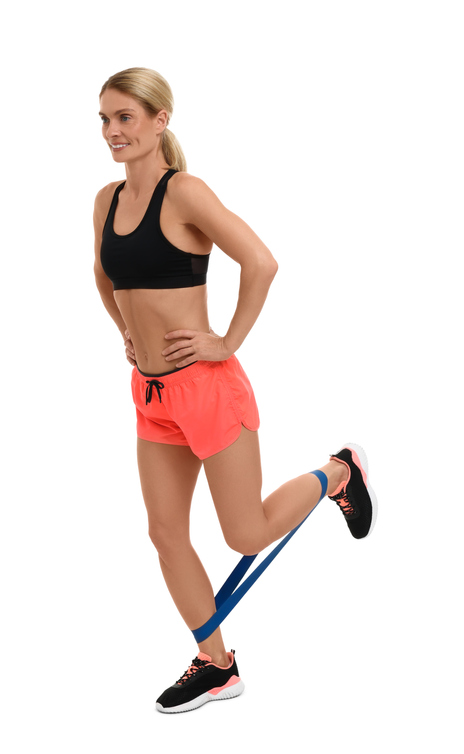
Difficulty level: easy to moderate
This standing, single-leg hamstring curl can be performed as a bodyweight exercise or with a resistance band looped around your ankles.
- Stand with your feet hip-width apart. Place your hands on your hips or hold onto a stable surface, like the back of a chair or a wall, for balance.
- Shift your weight to your right leg and, keeping your left foot flexed, slowly draw your left heel toward your butt.
- Once you’ve gone as far as you can go, pause for a second. Slowly lower your left foot to the ground.
- Repeat for the specified number of repetitions, then switch legs.
2. Seated Hamstring Curl
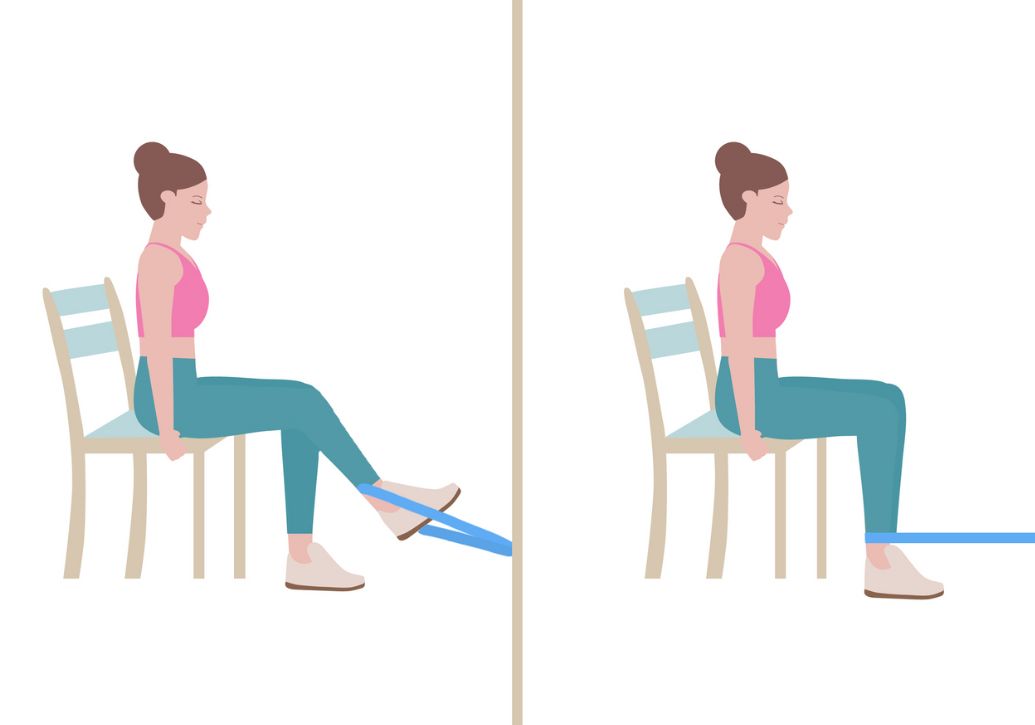
Difficulty level: easy to moderate
To perform seated hamstring curls, anchor a resistance band to a pole, weight rack, or heavy fixture at about ankle height. Arrange your chair or bench so that you’re facing the anchor point.
- Sit on the bench and extend your right leg so there’s a soft bend in your knee. Loop the open end of the resistance band around the back of your right ankle. (Alternatively, you can place the band around both ankles to work both legs at the same time.) There should be a moderate amount of tension on the band. This is your starting position.
- Keeping your chest up and your shoulders back, slowly draw your right heel back toward the bench as far as you can. Pause for a second.
- Slowly extend your leg to return to the starting position.
- Repeat for the specified number of reps, then switch legs.
3. Glider Hamstring Curl
Difficulty level: easy to moderate
The glider hamstring curl takes the already challenging glute bridge and dials it up a notch. If you don’t have gliders, try substituting paper plates or wearing slippery socks on hard flooring.
- Lie on your back with your arms at your sides, knees bent 90 degrees, and left heel resting on a glider.
- Engage your core and lift your hips so your body forms a straight line from your shoulders to your knees. This is your starting position.
- With control, slowly extend your left leg by sliding the glider away from your hips.
- Go as far as you can while still maintaining control and keeping your hips lifted. Then, use your hamstrings and glutes to slide the glider back toward your hips.
- Return to the starting position and repeat for the specified number of reps before switching sides.
4. Lying Hamstring Curl
Difficulty level: moderate to challenging
When performed with a dumbbell between your feet, the lying hamstring curl — also known as the prone hamstring curl — engages the hamstring muscles in both legs. You can also anchor one end of a resistance band to a pole, weight rack, or heavy fixture at about ankle height and slip the other end of the band around one or both ankles.
- Lie face down with your legs together and your forehead resting on your hands. If you’re using a dumbbell, place the handle between your feet. If you’re using a resistance band, make sure you’re facing away from the anchor point and loop the open end around the backs of both ankles. (If you’d prefer to work one leg at a time, loop it around one ankle and keep the other leg extended on the floor.)
- Engage your core and, keeping your feet flexed, slowly draw your heels toward your butt. Continue to keep your thighs pressed against the ground.
- Once you’ve gone as far as you can, pause, then slowly lower your feet back toward the ground.
- Repeat for the specified number of reps. (If you opt for the single-leg lying hamstring curl, complete every repetition on one leg before switching sides.)
5. Stability Ball Hamstring Curl
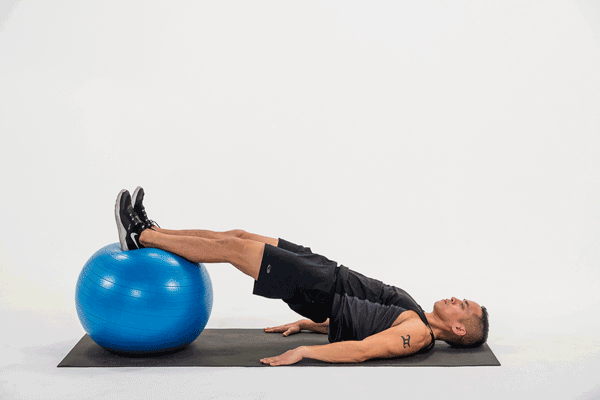
Difficulty level: moderate to challenging
By introducing an element of instability, the Swiss ball hamstring curl tests your balance and fires up your core muscles while also building strength in your hamstrings.
- Lie face up with your back on the ground, legs extended, and calves resting on the stability ball. Open your arms to a “T” position to aid balance.
- Engage your core, contract your glutes, and press the backs of your legs into the ball to lift your butt off the ground until your body forms a straight line from your shoulders to your ankles. This is the starting position.
- With your feet flexed, slowly draw your heels toward your butt, allowing the ball to roll toward you and under your feet.
- Pause, then slowly extend your legs, rolling the ball away from you, to return to the starting position.
- Repeat, keeping your hips lifted, for the specified number of reps.
6. Nordic Hamstring Curl
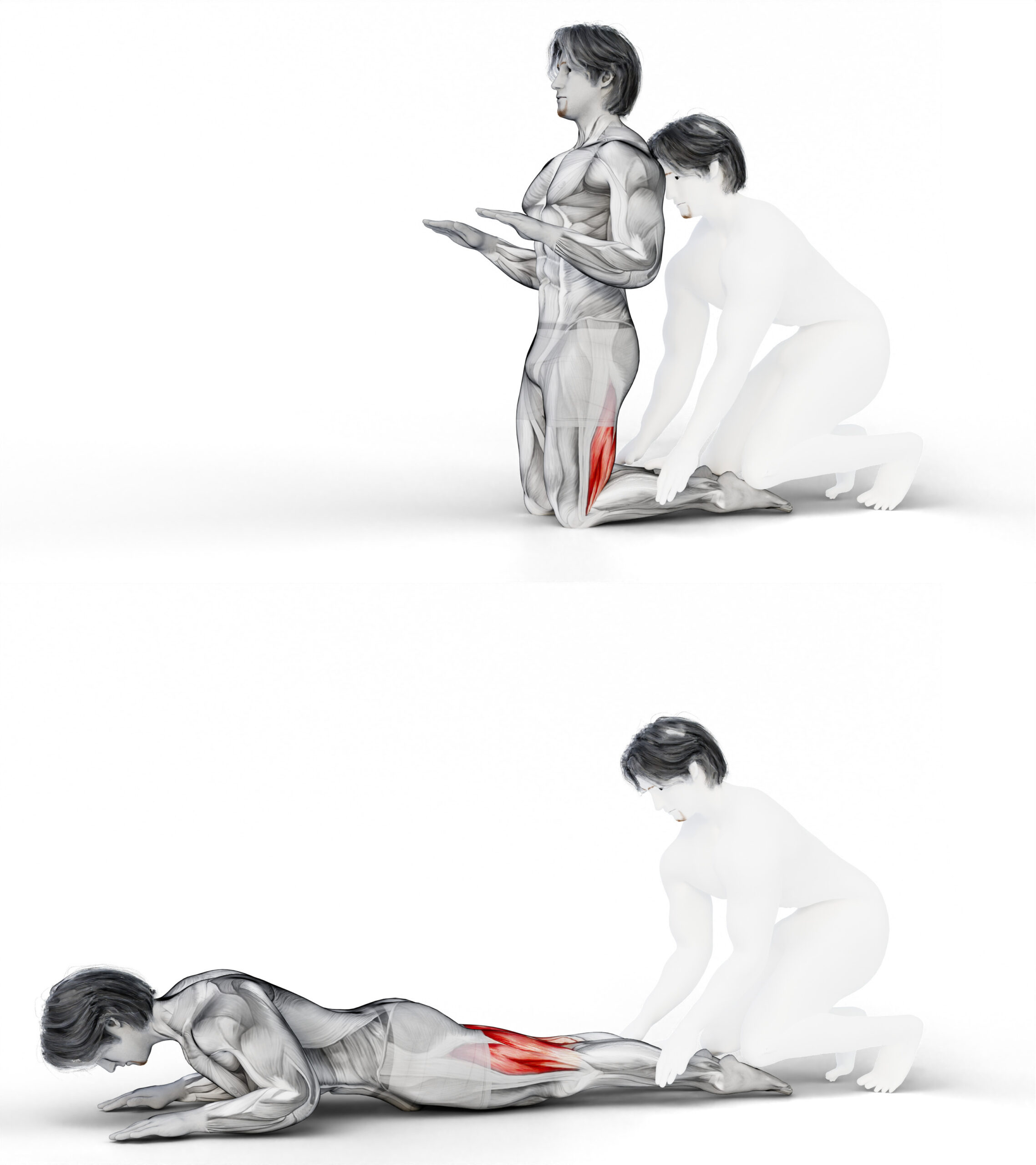
Difficulty level: challenging
If you’re looking for a challenge, give the Nordic hamstring curl a shot. Performed from a kneeling position, this advanced movement requires enough hamstring strength to both lower and lift your torso with control.
- Start in a tall kneeling position. (Place a rolled-up towel or pad under your knees for comfort.) Anchor your feet by slipping your heels under a heavy weight rack or piece of furniture, or ask a partner to hold your feet in place.
- Keeping your core engaged, slowly lean forward at your knees and lower your torso to the floor. Use your glutes and hamstrings to control your descent.
- Once you’re a few inches from the floor, allow your hands to catch the weight of your body against the ground. Immediately draw yourself back up to a tall kneeling position using your hamstrings and glutes. If necessary, use your hands to assist you.
- Repeat for the specified number of reps.
Hamstring Curls: Benefits
Your hamstring muscles play a critical role in flexing your knees and extending and rotating your hips. You need them for everyday movements like walking, running, squatting, climbing stairs, and bending over.
Adding hamstring curls to your workout can help you maintain healthy functional movement patterns by strengthening these muscles, but that’s not their only benefit. Here are a few more reasons to consider incorporating leg curls into your strength-training routine.
Versatility
There’s a hamstring curl option for every level of ability and experience (just look at the above list of options), and you can easily make each variation harder or easier by adjusting the resistance.
Strength and power
The hamstring muscles contain a large amount of type II muscle fibers, which are responsible for quickly generating large amounts of force. So, whether you play a sport or just want to climb stairs faster, hamstring curls can help you develop more lower-body strength.
Injury prevention
Research shows that regularly performing the hamstring curl — the Nordic hamstring curl, specifically, which applies load to the hamstrings as they are lengthened — may reduce the rate of sports-related hamstring injuries by up to 51 percent.
Addresses imbalances
As visual creatures, we tend to focus on the “mirror muscles,” or the body parts we can see, and forget about the muscles that make up the posterior chain. This can create problematic muscle imbalances that can lead to movement compensations and injury.
Exercises that strengthen the muscles that run along the backside of the body, like the hamstring curl, can help restore and/or maintain balance.
A shapely rear
It’s not all about the legs. Well-defined hamstrings can help accentuate your butt, making it look tighter and more lifted. Hamstring curls can trigger hypertrophy, or muscle growth, which is responsible for a more shapely booty.
Hamstring Curls: Muscles Worked
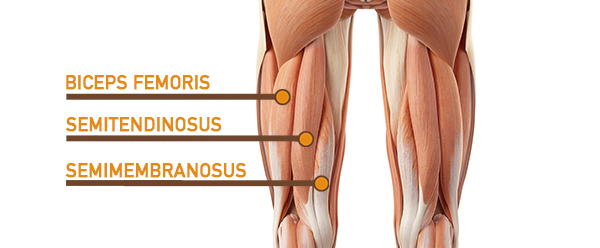
While some leg curl variations like the stability ball hamstring curl and the glider hamstring curl engage the glutes and deep core muscles, all hamstring curl exercises primarily target the hamstrings, a group of muscles located on the backs of your thighs.
The anatomy of the hamstrings, which originate at the pelvis and insert into the knee just above the calve, is comprised of three separate muscles.
Biceps femoris
Comprised of both a long head and a short head, the biceps femoris is the outermost hamstring muscle and is responsible for flexion of the knee, extending the thigh at the hip, rotating the lower leg when the knee is slightly bent, and rotating the thigh when the hip is extended.
Semimembranosus
The innermost hamstring, the semimembranosus also functions to flex the knee, extend the thigh at the hip, and assist in both thigh and lower-leg rotation.
Semitendinosus
The semitendinosus, which is located between the biceps femoris and the semimembranosus, has essentially the same functions as the semimembranosus.